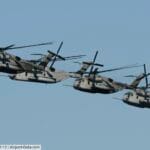Dive into the fascinating world of Admiral Raymond Spruance, a naval icon who played a pivotal role in shaping the outcome of World War II. Known as the “Quiet Warrior,” Spruance’s calm demeanor and strategic brilliance guided the United States Navy to victory in some of the war’s most decisive battles, including Midway and the Philippine Sea. Join us as we explore his extraordinary life and career, unraveling the secrets of his leadership and examining how he outshined his famous counterpart, Admiral Halsey. Through firsthand accounts and historical analysis, we’ll paint a vivid picture of one of the greatest naval minds in history.
A Sailor’s Formation: Spruance’s Path to Greatness
Admiral Raymond A. Spruance. The name might not resonate like Nimitz or Halsey, but in the annals of naval history, Spruance stands tall. He was the quiet warrior, the strategist who steered the US Navy through the most brutal battles of World War II in the Pacific. His story is not one of boisterous heroism, but of quiet competence, calculated risks, and a deep understanding of naval warfare.
Born in 1886, Spruance’s journey began, like many aspiring officers, at the United States Naval Academy in Annapolis. Graduating in 1903, he embarked on a career that initially seemed standard. He served on battleships like the USS Iowa and USS Minnesota, gaining experience in various roles during a time when the US Navy was rapidly modernizing. While World War I provided valuable experience, it was during these formative years that Spruance likely honed his analytical skills, his knack for grasping the bigger picture, and his ability to remain calm under pressure – traits that would define his leadership in the coming decades.
The Crucible of Midway: A Turning Point
World War II was where Spruance truly stepped into the spotlight. At the Battle of Midway, a critical turning point in the Pacific War, Spruance, then a Rear Admiral, found himself in command of Task Force 16, centered around the carriers USS Enterprise and USS Hornet. Faced with a numerically superior Japanese fleet, he made a series of audacious yet carefully calculated decisions. Refusing to be drawn into a premature engagement, he waited for the optimal moment to launch his carrier aircraft. The result? A stunning American victory, sinking four Japanese carriers – a blow from which the Imperial Japanese Navy would never fully recover. Midway was Spruance’s arrival moment, a testament to his tactical brilliance and unflappable demeanor.
Architect of Victory: Beyond the Battle of Midway
Midway was no fluke. Spruance continued to demonstrate his strategic prowess. In the Battle of the Philippine Sea (June 1944), often nicknamed the “Great Marianas Turkey Shoot” due to the sheer number of Japanese planes shot down, Spruance, now commanding the Fifth Fleet, orchestrated another decisive victory. His meticulous planning ensured the destruction of a significant portion of Japan’s remaining naval air power, crippling their ability to mount further offensive operations. This victory solidified Spruance’s reputation as a master strategist capable of outmaneuvering his opponents.
His leadership proved crucial in the invasions of Iwo Jima and Okinawa in 1945. These were some of the most brutal battles of the war, pushing Spruance’s skills to the limit as he balanced the immense firepower at his disposal with the need to minimize casualties.
From Warships to Diplomacy: Spruance’s Second Act
After the war, Spruance’s service took a different form. President Truman, recognizing his diplomatic acumen, appointed him Ambassador to the Philippines in 1952. This role, a stark contrast to the thunder of naval guns, required a different kind of leadership, one that Spruance readily embraced. He navigated the complexities of post-war reconstruction and fostered strong relations with the newly independent nation. This suggests a remarkable adaptability and a deep commitment to service that transcended the battlefield.
Have you ever been interested in military history? As a big fan of military history, I would like to recommend you to visit Camp Toccoa.
Spruance vs. Halsey: A Study in Contrasts
Spruance is often compared to his more flamboyant contemporary, Admiral William “Bull” Halsey. Halsey was known for his aggressive, risk-taking style, while Spruance was the more cautious, analytical commander. Some argue that Spruance’s methodical approach may have, at times, been too cautious. However, his consistent record of success speaks for itself. The Navy needed both types of leaders – the bold attacker and the calculating strategist. Both men made invaluable contributions to the war effort, highlighting the importance of diverse leadership styles in achieving complex objectives.
The Fifth Star Debate: Recognizing Spruance’s Legacy
One lingering question surrounding Spruance’s legacy is the debate over whether he should have been awarded a fifth star, elevating him to the rank of Fleet Admiral. Some believe his contributions to the war effort warranted this honor, citing his pivotal victories and strategic brilliance. Others argue that his lack of a high-profile public persona, unlike Halsey or Nimitz, may have contributed to him being overlooked. The debate continues, a testament to the complexity of evaluating historical figures and the enduring impact of Spruance’s contributions.
A Legacy of Quiet Strength
Admiral Raymond Spruance was a man who shunned the limelight, preferring to let his actions speak for themselves. He embodied the concept of quiet strength, leading by example and inspiring those around him with his calm demeanor and unwavering resolve. His legacy endures, a testament to the power of strategic thinking, careful planning, and the unwavering dedication of a true “Quiet Warrior.” His influence continues to shape naval doctrine and leadership training, reminding us that sometimes, the quietest voices can have the most profound impact.















